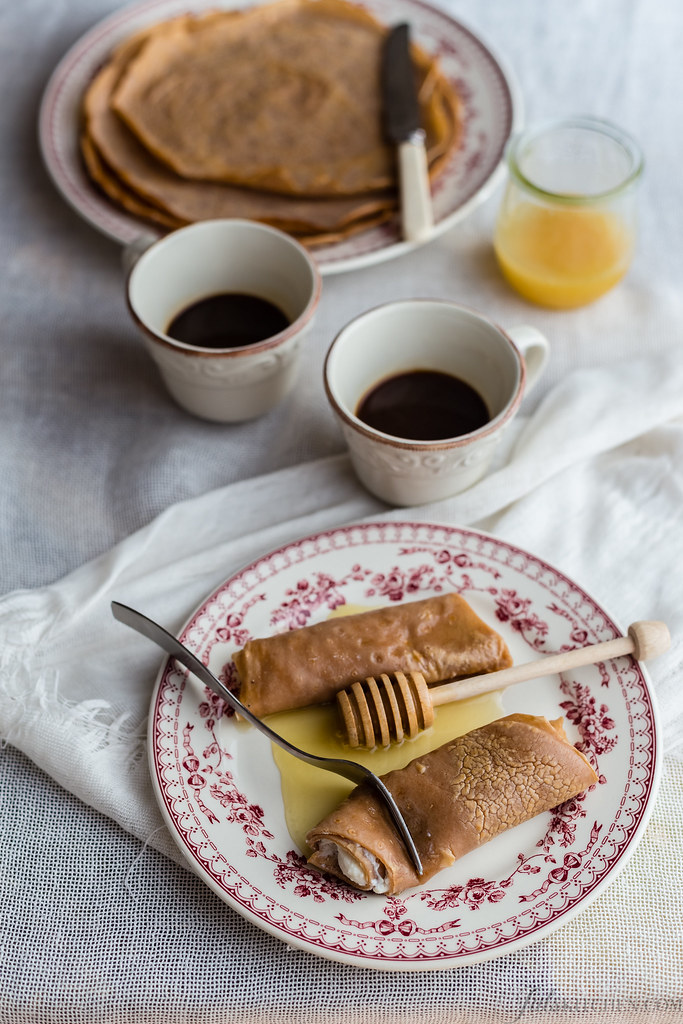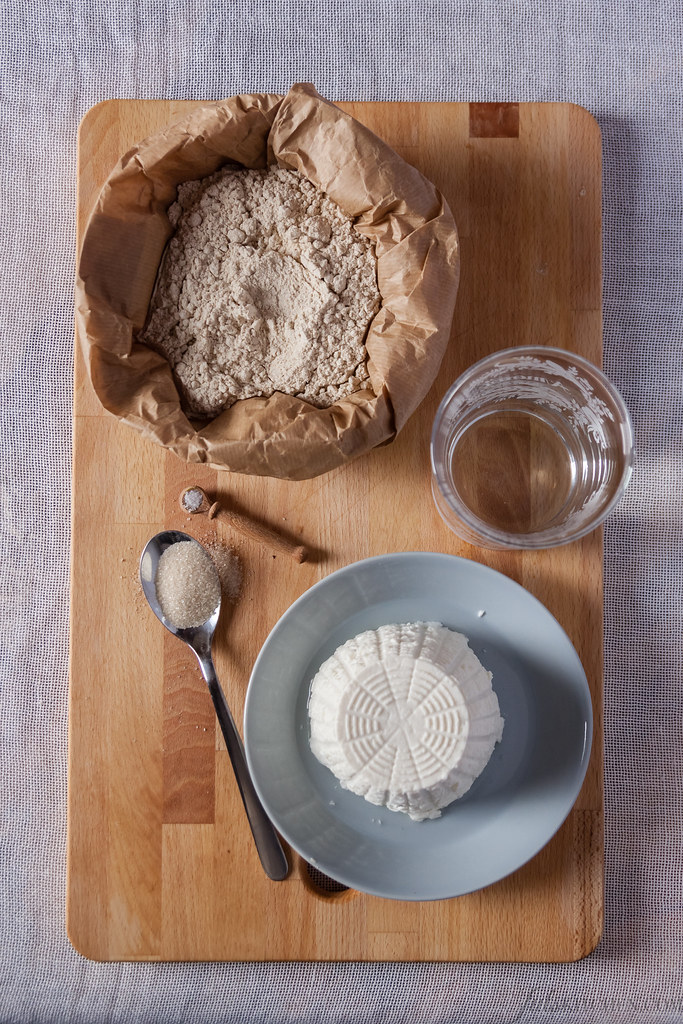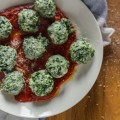Necci, Tuscan chestnut pancakes. As easy as that
Castagnaccio, a chestnut cake, is one of the first sweet treats that come to my mind when I think about the unpretentious and modest Tuscan cucina povera, as it is made just with chestnut flour, water, a drop of good olive oil, rosemary, raisins and pine nuts. You may think that there can’t be nothing more simple, then you meet necci.
Until a few years ago I didn’t even know them. In the afternoon, when it was time for a merenda, a snack to put something in your stomach in between lunch and dinner, I would have toasted bread and olive oil in winter, bread and tomatoes in summer. There was often also a steaming cup of tea and some biscuits: these were the flavours of my afternoon. Flavours of a time when no one had to fight hunger, of a happy childhood when grandma and mum raised me with simple and seasonal ingredients.

Chestnut flour was not included among the staple ingredients of our pantry. Today it can be hard to buy a good chestnut flour, certainly it is expensive.
Yet the chestnut flour, also called sweet flour, is one of the key ingredients of the Tuscan mountain cucina povera, from Garfagnana to Pistoia, from Mugello to Amiata. When people had to struggle to source food for the family, chestnuts supported the local population with their calorie supply and their versatility. Roasted chestnuts over open fires would become bruciate, burnt, boiled chestnuts with fennel seeds would be called ballotte, dry chestnuts would instead enrich meat or game stuffing.

Forget for a moment elegant recipes such as Mont Blanc. When chestnuts are dried and ground into fine flour, they turn into polenta, bread, cakes, cookies, fresh pasta, necci.
Necci are thin pancakes with crisp edges, belonging to Garfagnana and the Pistoia Mountains, nothing more than simple crêpes made just with chestnut flour and water, that could be then eaten plain or filled with sausage, pancetta or ricotta. A good spoonful of mellow ricotta turn them into poor mountain people’s sweet treats or into an humble and unpretentious afternoon snack.
If you consider necci already charming, wait until you hear how they were made, and are still prepared in the mountains. To add some colour to a recipe which is in itself fascinating, figure in your mind a roaring fire and two flat cast iron pans, which are called testi. The thin batter is poured with a ladle on a scorching pan, covered with the other hot pan and cooked for a few minutes on the fire. The pans were greased with a piece of lard, but today you can also use some good olive oil. Once ready, the necci were stacked, separated by chestnut leaves, ready to be eaten as you prefer.
This is a traditional recipe of cucina povera, but it is also charmingly modern.
As you might have already understood just reading the required ingredients, necci are naturally gluten-free, with no sugar added. If you avoid ricotta in the filling you would also have a suitable recipe for those who suffer from lactose intolerance.
They are quick, easy, and all you need now is a good non-stick pan. This is why Lagostina asked me to make a video recipe. You can lightly grease the pan with a drop of olive oil and this will help you flip the thin pancakes with a flat spatula.
Here’s the video recipe made with Tommaso, now comfortably working behind the camera.

Necci, Tuscan chestnut pancakes with sheep ricotta
Once necci are ready, play with your favourite ingredients to fill them. For me, nothing beats a dollop of sheep ricotta sweetened with a teaspoon of sugar, but believe me when I say that necci are moreish with a spoonful of mascarpone and a thick layer of chocolate spread.
Here is the recipe for those still feel the charm of words.
Necci with sheep ricotta
Print Recipe Pin Recipe Share by EmailIngredients
- 400 g of chestnut flour, 14,1 oz - about 2 cups
- 450 ml 15,2 fl oz - slightly less than 2 cups of water
- 1 pinch of salt
- Olive oil
For the filling:
- 300 g of fresh ricotta, 10,5 oz - 1 ¼ cup
- 2 tablespoons of cane sugar
- Honey
Instructions
- Pour the chestnut flour in a bowl and add a pinch of salt.
- Pour the water in a thin stream into the flour, stirring constantly with a whisk to prevent any lumps. Mix until you get a smooth batter.
- Grease a pan with a a drop of olive oil and heat it over medium heat, then pour a ladle of batter into the centre of the pan.
- Tilt the pan to spread the batter evenly, then cook until the pancakes is golden and dry on one side. Flip the pancake with a spatula and cook on the other side.
- Move the necci onto a plate and stack them as they are ready.
- When you have finished making the necci, prepare the ricotta filling: you can use the ricotta plain or you can add a tablespoon or two of brown sugar. Whip the ricotta, spread it onto a chestnut pancake, wrap it on itself and drizzle with honey.

Link Love
- Check these photos found on the Chestnut Museum website, you can have an idea of the traditional way of cooking necci.
- Emiko manages to bring out the medioeval charm of making necci in her post of a few years ago.
- In this post you’ll find an alternative way of making necci, cooking them in between hot flat stones layered with chestnut leaves.
- Check The Florentine for Judy’s recipe to make necci, with milk and egg this time.










I can even picture them slathered with a layer of Nutella then a dollop of ricotta. Yum!! I could have some now. I’m going to have to try to find some chestnut flour here in the US. Grazie per la ricetta!
Please can you correct the amounts of water to flour, the measures given produce a dough rather than a batter!!
it is actually correct, but it depends a lot on the kind of flour you bought. Try adding more water if necessary, unfortunately it is so different from flour to flour!
I have tried adding more water, instead of s smooth batter it produced a kind of slurry. I am using organic Italian 100% chestnut flour.
I will try making pancakes and let you know how they turned out.
Is there a way I can attach photos?
ok, sorry to hear this. It happened once to me, and the reason is that the flour is not fresh. Try sending me an email to juls@julskitchen.com
It should not work well for pancakes, but you can still make a decent castagnaccio!
I just sent an email with attachments
Did you receive my email with photos and short video?
I needed to add significantly more water to get a pourable batter and then they didn’t hold together at all. Tasted ok but they were just a heap of cooked crumbles.
Sometimes this happens when the chestnut flour is old or somehow not good anymore. It happened to me as well. The best way to check if it is good is to see if, adding the water, it immediately becomes smooth and of a beautiful warm brown colour. If it becomes grainy and pale, the flour is not good anymore, at least for the necci, while you can still use it for cakes!